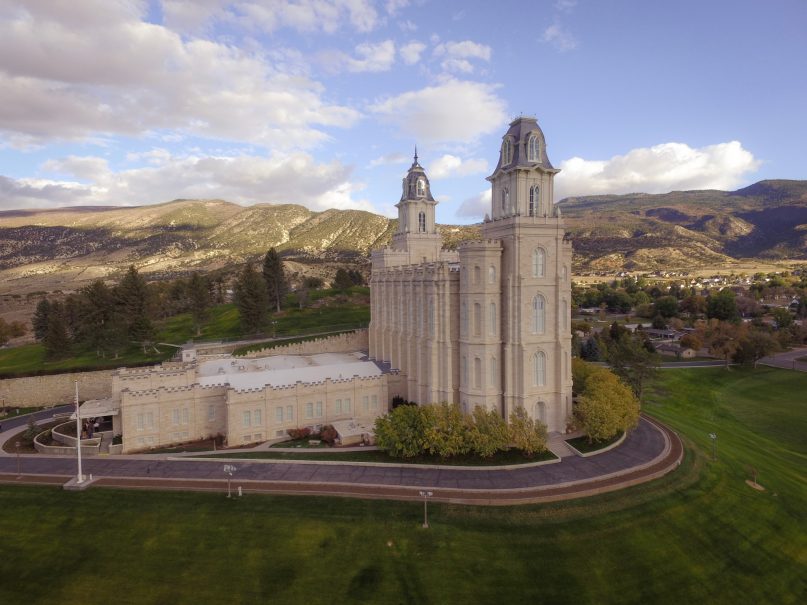(RNS) — Relief and gratitude are paramount today for members of The Church of Jesus Christ of Latter-day Saints at an apparent reversal of a previous position taken by the leaders of the church. Many members were distraught at the announcement earlier this year that the famed murals inside the Manti Utah Temple would be removed from the building.
Initially, the church said that the murals would be “photographed, documented, and removed.”
Then, presumably in response to the outcry from many members, it promised that it would try to preserve portions of the murals and put them on display for the public at another location.
Today, however, the church announced that it has changed its plan again and will now save the murals in their entirety inside the temple, where they were designed to be seen and used.
“As we have continued to seek the direction of the Lord on this matter, we have been impressed to modify our earlier plans for the Manti Utah Temple so that the pioneer craftsmanship, artwork and character will be preserved, including the painted murals loved by so many,” said the church’s president, Russell M. Nelson. “We will leave those murals where they are located now — inside the Manti Utah Temple.”
To make it possible for the artwork to be saved and for area members to have access to a modern temple experience, President Nelson also made a surprise announcement that the church will build a brand-new temple nearby in the neighboring town of Ephraim.
Generally, announcements of new temples happen only in the twice-yearly General Conference of the Church, which occurred just a few weeks ago, in early April. At that time, the church announced plans for 10 new temples around the world. It is highly unusual for an additional temple to be declared outside of Conference.
Nelson said that having the new temple in Ephraim would allow “members in this temple district to participate in sacred temple ordinances and, at the same time, allow us to preserve the unique classical character and useful life of the historic Manti Utah Temple.”
In particular, much of the protest about the loss of the Manti Temple’s murals centered around the artwork of Minerva Teichert (1888–1976), one of the most famous Mormon artists in history. Although her “World Room” murals were not part of the original 1888 Manti Temple but were added in 1947, they have become synonymous with the temple in the minds and hearts of many Latter-day Saints. In a passionate plea in March for the church to reconsider its plan and save the murals, By Common Consent blogger Margaret Tarkington wrote that Teichert’s murals were the “single greatest artistic achievement by an LDS woman.”
“No amount of photographing can replace actually experiencing Teichert’s murals, which are vast in conception, scope, vision, and size (the room is 28 feet tall, 50 feet long, and 25 feet wide). The murals cover nearly 4000 square feet. Unlike prior World Room murals depicting fighting animals, Teichert portrayed the pageant of human history in a fallen world. Beginning with the Tower of Babel portrayed in the back of the room, she painted the history of the Gentiles and Israelites on opposing side walls (including Abraham, Joseph, Moses, the crusaders, Columbus, the Pilgrims on the Mayflower) culminating in the gathering of the early Latter-day Saints to the North American Continent and their efforts to build Zion, portrayed on the front wall. All human history marches towards the restoration, the gathering of the Saints, and ultimately the establishment of Zion. To remove these murals is akin to painting over the Sistine Chapel—in terms of LDS art, history, and women’s contributions and achievement. Most importantly, the decision is irreversible if the murals are destroyed.”
Many are breathing a sigh of relief that Teichert’s murals, as well as other irreplaceable pieces of art and history, will be saved from destruction.
Related content:
No more live endowment sessions in Mormon temples






